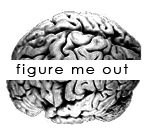

Severe combined immunodeficiency is a group of hereditary disorders linked to defects of at least 17 different genes. Today, thanks to newborn screening in many states, early intervention, and advances in treatment, children with severe combined immunodeficiency can be successfully treated with bone marrow transplant and in some cases gene therapy. Many died in early childhood after repeated infections.

Until a few years ago, the majority of children with severe combined immunodeficiency were not diagnosed until they were at least 6 months old and very sick. At the time, doctors believed the only way to treat children born with this rare disorder was to isolate them until they could receive a bone marrow transplant from related donor with a 100 percent human leucocyte antigen match.
#Scid assessment movie
Treatment for SCID should be considered a pediatric emergency.Ĭommonly called the “bubble boy disease” or “boy in the bubble” syndrome, SCID became widely known in the 1970s and ’80s due to the publicity and later a movie about David Vetter, a boy with X-linked SCID, who lived in a plastic, germ-free bubble for 12 years. As a result, the child’s body is unable to fight off infections and can become very sick from infections like chickenpox, pneumonia and meningitis and can die within the first year of life. This interview takes about 30 minutes to 1.5 hours, depending on individual’s experiences.Severe combined immunodeficiency (SCID) is a group of rare, life-threatening diseases that cause a child to be born with very little or no immune system. The Structured Clinical Interview for DSM-IV Dissociative disorders (SCID-D) is widely used to diagnose dissociative disorders, especially in research settings. How long is the SCID-D structured clinical interview? The SCID for DSM-IV (SCID-IV) is still available for researchers and clinicians who are interested in collecting diagnoses according to the DSM-IV criteria (rather than DSM-5) or who are using the SCID-IV interview in ongoing studies that are collecting diagnoses according to DSM-IV. Major parts of the SCID have been translated into other languages, including Danish, French, German, Greek, Hebrew,… There are at least 700 published studies in which the SCID was the diagnostic instrument used. The SCID- II is a diagnostic exam used to determine Axis II disorders ( personality disorders ). What kind of diagnostic exam is the SCID? It also includes all of the relevant DSM-5 subtypes, severity and course specifiers. What are the differences between the various versions of the SCID-5? The Research Version (SCID-5-RV) is the most comprehensive SCID version and contains more disorders than the Clinician Version or the Clinical Trials Version. What are the differences between the various versions of the scid-5?
#Scid assessment full
Overall, the full SCID-5-Research Version (RV) covers 63 diagnoses, takes an average of 90 min to administer, and requires considerable clinician training. How long does the SCID 5 take to administer? They include antisocial personality disorder, borderline personality disorder, histrionic personality disorder and narcissistic personality disorder. What are the major personality disorders?


 0 kommentar(er)
0 kommentar(er)
